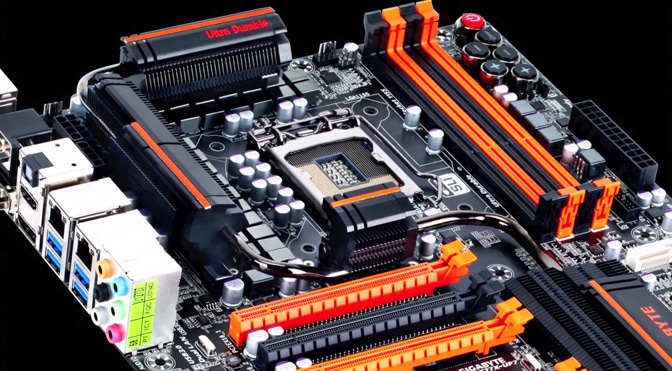Start Your Engines: PCI Express 4.0 Standard Officially Released
- Welcome to the PBS GAMETEAM's website, WE ARE RECRUITING. JOIN US and get a FREE VIP slot on our servers! -
- Our Thanks to Adaari, balz, hal, Bron,Yordy,Jonathan,Jozsef,BradJerney, wenz,Martin,Barry,chris, Ruben, Itsvan, Marko, Lan, Valter, Erik, joe, Matthew, Alois, Graig, Jason, caveman,Edwards, Jaimie, Ondre, Toby,Google, Phill, Gchrome,cramer,Rick,Jermey, lucas, kold, Roberto, Farq,Xiaton, Karlo, Rainman, Erik, Andrea and a very special thanks to our great premium members: Pon, Smekkes, Muttonchop,Krabbepote, Stoommeester, arjan, Xillax, Kapsta, Alexander,Duck, HausserBG, Bravecoward, Reint,Bas,Batuhan, Gunnar,Nuttycake,CJ Mini,tworooms,Jeffrey, Swag, Waverider, Sheepfarmer and Oberfield!for supporting the PBS GAMETEAM! -
- Do you like our servers or site? Support us on this page -
- Do you have a question? contact us -
- Join our Discord! -
- Check our latest news about our PBS games on this link -
- Would you like to donate for our servers? Please check this link -
- We are the best HLL, ARMA, BB, RS2, MW3 community out there! Sign up today! -
- Like us on Facebook! -
- Like us on Twitter! -
- We have many new wars! Check and signup here pls -
- Join our latest community event #here! -
- This topic has 0 replies, 1 voice, and was last updated 7 years, 7 months ago by
 Powerbits.
Powerbits.
-
AuthorPosts
-
-
26/10/2017 at 18:22 #18079
As of now, the PCI Express 4.0 standard has been finalized and officially released. The new protocol promises twice the per-lane bandwidth of PCI Express 3.0, allowing a GPU or other accelerator to transfer up to 64GB/s in a duplex x16 link. It’s also been a long time coming.
Initially, PCIe evolved relatively quickly. It debuted in 2003 with up to 8GB/s of bandwidth in full duplex mode (that’s 4GB/s of bandwidth in either direction, 8GB/s simultaneously). PCI Express 2.0 bumped that to 8GB/s unidirectional and 16GB/s bi-directional in 2005 and PCI Express 3.0 hit 32GB/s of bi-direction bandwidth (16GB/s in each direction) in 2010. PCI Express 4.0, however, had a much longer development period due to the difficulty of continuing to deliver a doubling of bandwidth in a backwards-and-forwards compatible electrical interface and mechanical form factor. Al Yanes, chairman and president of PCI-SIG, has released a blog post (PDF) detailing the advances of the new standard. New capabilities include:
- Extended tags and credits for service devices
- Reduced system latency
- Lane margining
- Superior RAS capabilities
- Scalability for added lanes and bandwidth
- Improved I/O virtualization and platform integration
In the past, we’ve often talked about PCIe strictly in terms of full-sized desktop GPUs, but that understates the benefit of these technologies. First of all, single GPU systems rarely get much benefit from higher PCI Express speeds, at least not initially. Multi-GPU systems, in contrast, can benefit more from these high-speed links because in these cases, PCIe is explicitly used for cross-GPU communication. We’ve put together a slideshow of the benefits and advances in PCI Express over the past few years, shown below. Each slide can be clicked to open it in a separate window.
With the advent of M.2 SSDs that use PCI Express instead of SATA and the very early start of 10GbE ethernet, the way is clear for motherboard manufacturers to offer the same performance as PCIe 3.0 while using fewer PCI Express lanes, or for increasing throughput in the same number of lanes. A 10GbE networking card can be handled by a single x1 PCIe 4.0 link, for example. And the technology will be useful if the external graphics market ever takes off — a theoretical Thunderbolt 4 link with an x4 linkage to an external graphics adapter would have the same bandwidth as a PCI Express 2 x16 slot or an x8 PCIe 3.0 adapter.
Now that Intel and AMD have consolidated their chipsets on to their respective processors, rolling these technologies out will happen on their own time frames. Historically it’s taken 8-12 months for new PCIe standards to show up on motherboards, so don’t look for these products in the near-term future. AMD hasn’t said whether it’ll support PCIe 4.0 on its Ryzen+ products or if the feature will wait for Ryzen 2 — if we had to guess, we’d guess the latter. PCI Express 5.0 is set to be finished in 2019 — if the PCI-SIG can keep to that schedule we could see motherboards popping up as early as 2020 or 2021 depending on how the technology rollout intersects with AMD and Intel’s own refresh plans.
-
-
AuthorPosts
- You must be logged in to reply to this topic.


